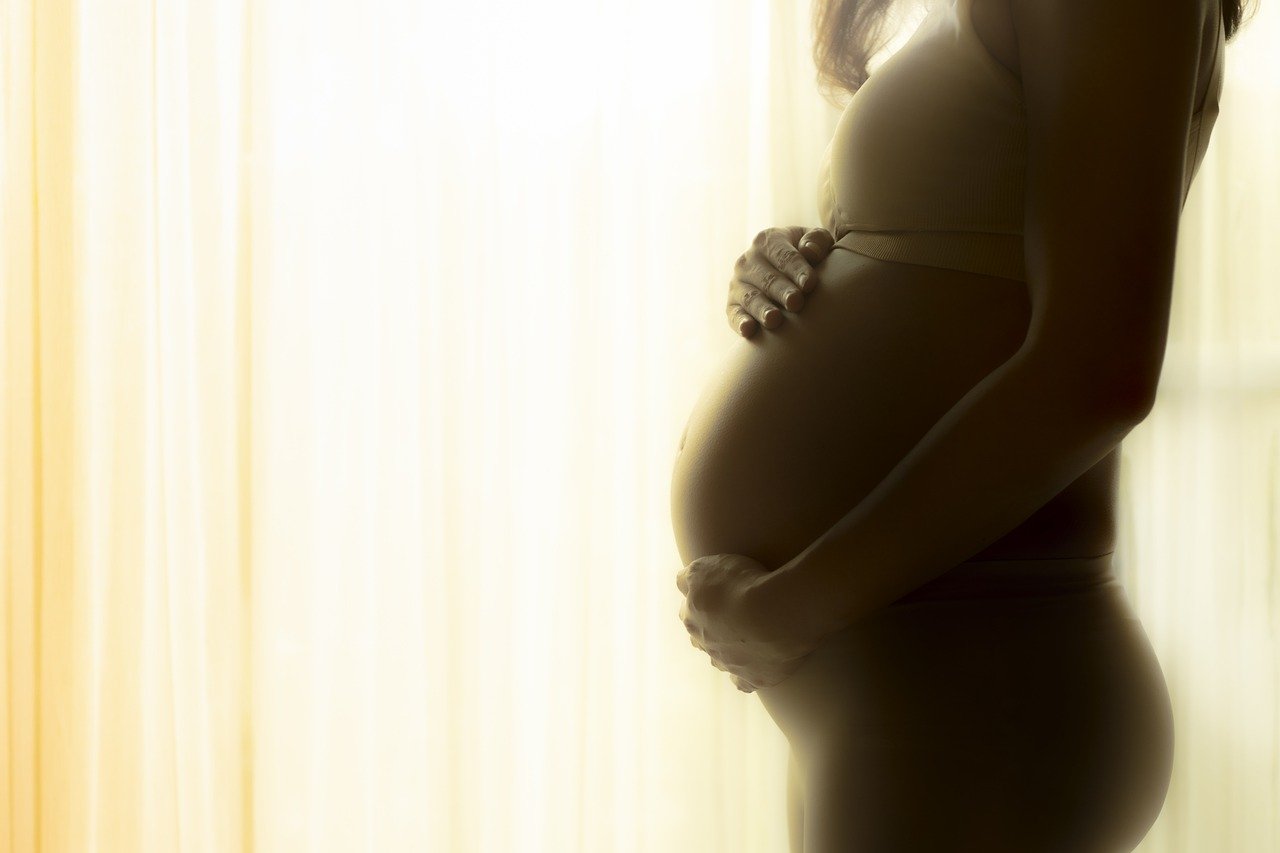
Rediscovering Strength and Confidence Postpartum
If you’re reading this, chances are you’ve stood in front of the mirror, gently prodding what many affectionately term as the ‘mommy belly.’ Whether you’re a few months or a few years postpartum, this lingering reminder of your pregnancy can be a source of frustration. Despite the joys of motherhood, many women find themselves struggling to reconcile with the physical changes that accompany this life-transforming journey.
The Mommy Belly: More Than Just a Cosmetic Concern
The ‘mommy belly’ isn’t just about aesthetics. It’s often a sign of something deeper – a common condition known as diastasis recti, where your abdominal muscles have overstretched during pregnancy. This stretching can lead to a separation in the abdomen, giving that characteristic bulge many new moms experience. For some, it’s a mild annoyance. For others, it can lead to discomfort and a feeling of weakness in the core.
Why Crunches Won’t Cut It
The internet is awash with quick fixes and exercise routines promising to flatten your postpartum tummy. However, many of these, especially those focusing on crunches, not only fail to address the root cause but can potentially exacerbate the issue. Crunches and similar exercises can put undue stress on weakened abdominal muscles, hindering recovery rather than aiding it.
A New Approach: The No-Crunch Ab Challenge
This is where our ‘No-Crunch Ab Challenge’ comes in. Designed specifically for postpartum bodies, this 2-week guide focuses on gently yet effectively rebuilding your core strength without the strain of traditional crunches. The aim is not just to reduce the appearance of the mommy belly but to nurture your body’s recovery from the inside out.
What to Expect in the Next 2 Weeks
In the coming fortnight, we’ll embark on a journey of targeted exercises, nutritional advice, and lifestyle tips. Each day of the challenge is carefully crafted to progressively engage and strengthen your core muscles, respecting the delicate balance your postpartum body demands. We’ll also delve into the nutritional aspects essential for muscle repair and overall health. Moreover, we’ll explore how daily habits, like posture and movement, play a vital role in your recovery.
The Goal: A Stronger, Confident You
By the end of these two weeks, the goal is not just to witness a visible change but to feel a renewed sense of strength and confidence in your body. This challenge is more than a fitness routine; it’s a step towards embracing and loving your body in its postpartum state, recognizing the incredible journey it has been through.
So, grab your exercise mat, and let’s embark on this journey together. It’s time to reclaim your strength, empower your body, and celebrate the remarkable journey of motherhood.
Understanding the Mommy Belly: A Comprehensive Look
Unraveling the Mystery of the Postpartum Belly
The term ‘mommy belly’ is often thrown around in postpartum discussions, but what does it truly entail? This section delves into the anatomy, causes, and implications of the postpartum abdominal changes that so many women experience.
Anatomy of the Mommy Belly: Diastasis Recti Explained
At the core of the mommy belly issue is a condition known as diastasis recti. This occurs when the rectus abdominis muscles – often known as the ‘six-pack’ muscles – separate along the midline of the belly. This separation is a natural response to the expanding uterus during pregnancy, as it pushes against the abdominal wall and stretches the connective tissue, the linea alba, that binds these muscles together.
Post-delivery, many women find that this gap doesn’t fully close on its own, leading to a protruding or sagging belly. Diastasis recti is more than a cosmetic concern; it can lead to core weakness, back pain, and in some cases, pelvic floor dysfunction.
Why Does the Mommy Belly Occur? Unpacking the Causes
Several factors contribute to the development and persistence of the mommy belly:
- Hormonal Changes: Pregnancy triggers a surge in hormones like relaxin, which loosens ligaments and joints in preparation for childbirth. This loosening also affects the abdominal muscles, making them more susceptible to separation.
- Physical Strain of Pregnancy: As the baby grows, the uterus stretches, exerting pressure on the abdominal wall. This is particularly pronounced in multiple pregnancies, larger babies, or closely spaced pregnancies.
- Postpartum Factors: After childbirth, factors such as inadequate rest, improper lifting techniques, and rushing into high-impact exercises can hinder the recovery of the abdominal muscles.
- Genetic Predisposition: Some women are more genetically predisposed to developing diastasis recti, influenced by factors like natural muscle tone and overall body structure.
The Myth of Crunches: Why They May Do More Harm Than Good
In an effort to flatten the mommy belly, many women turn to traditional abdominal exercises like crunches. However, these exercises can actually worsen diastasis recti. Movements that involve intense flexing of the abdominal wall can increase the pressure on the already weakened midline, potentially widening the gap between the muscles.
Embracing a No-Crunch Approach: The Safe Way Forward
Addressing the mommy belly effectively requires a nuanced approach that goes beyond mere cosmetic rectification. It’s about understanding the underlying changes your body has undergone and nurturing it back to strength in a safe, supportive manner.
In the following sections, we will introduce a series of carefully selected exercises that strengthen the core without straining it. We will also explore nutritional and lifestyle changes that can aid in the recovery process, ensuring a holistic approach to healing your postpartum body.
Stay tuned as we dive into Week 1 of our challenge, where we start laying the foundation for a stronger core with gentle, effective exercises that respect your postpartum body’s needs.
Week 1: Laying the Foundation for Core Recovery
Embarking on a Gentle Journey to Core Rehabilitation
The first week of our ‘No-Crunch Ab Challenge’ is all about laying a solid foundation for core recovery. This phase is crucial in preparing your body for more advanced exercises in the second week, ensuring a gradual and safe strengthening process.
Day 1-3: Gentle Core Engagement
Objective: Introduce your body to gentle core engagement exercises that begin the process of healing and strengthening without strain.
- Pelvic Tilts: This exercise gently engages your core and helps in re-establishing mind-muscle connection.
- How to Do It: Lie on your back with knees bent. Flatten your back against the floor by gently tilting your pelvis upward. Hold for a few seconds, then release.
- Repetitions: 10-15 reps, 2 sets.
- Deep Core Breathing: Focus on deep breathing to activate and strengthen the deep core muscles.
- How to Do It: Sit or stand comfortably. Inhale deeply, expanding your belly and ribs. Exhale while gently pulling your belly button toward your spine.
- Repetitions: 5 minutes of continuous breathing.
- Standing Pelvic Tilts: Translates the pelvic tilt into a functional standing position.
- How to Do It: Stand with your back against a wall, feet shoulder-width apart. Perform pelvic tilts by rolling your hips under and back.
- Repetitions: 10 reps, 2 sets.
Day 4-6: Progressing with Stability
Objective: Build upon the initial exercises by introducing stability-focused movements that further strengthen your core.
- Modified Planks: A gentle introduction to planks that avoids putting too much strain on the abdominal separation.
- How to Do It: Start on your knees and elbows. Keep your spine straight and hold the position, ensuring your abdominal muscles are gently contracted.
- Duration: Hold for 15-30 seconds, 2-3 sets.
- Heel Slides: This exercise maintains core stability while moving the legs.
- How to Do It: Lie on your back with knees bent. Slowly extend one leg, then slide it back to the starting position.
- Repetitions: 10 reps per leg, 2 sets.
- Side-Lying Leg Lifts: Targets the obliques and lateral core muscles.
- How to Do It: Lie on your side with legs stacked. Lift your top leg while keeping your core stable.
- Repetitions: 10-15 reps per side, 2 sets.
Nutritional Tips for Week 1
Fueling Your Body for Recovery
- Hydration: Drink plenty of water to aid in muscle recovery and overall health.
- Protein-Rich Foods: Incorporate lean proteins like chicken, fish, and legumes into your meals to support muscle repair.
- Fiber: Include high-fiber foods like vegetables, fruits, and whole grains to aid digestion and maintain satiety.
- Small, Frequent Meals: Aim for smaller, nutrient-dense meals throughout the day to maintain energy levels and prevent overeating.
As you progress through the first week, remember to listen to your body. This is not about pushing through pain but about nurturing and gradually rebuilding your strength. Celebrate each small victory, as every effort brings you closer to a stronger, more confident postpartum body.
Stay tuned for Week 2, where we’ll build on this foundation and introduce more dynamic movements to further strengthen and tone your core.
Week 2: Building Strength and Endurance
Advancing Towards a Stronger Core
As we enter the second week of our ‘No-Crunch Ab Challenge’, the focus shifts to building upon the foundational work from Week 1. This week, we’ll introduce dynamic movements that challenge your core strength and endurance, continuing your journey towards a stronger, more resilient postpartum body.
Day 8-10: Introducing Dynamic Movements
Objective: Integrate dynamic exercises that challenge your core stability and control, further strengthening your abdominal muscles.
- Leg Drops: Enhance control over your lower abdominal muscles.
- How to Do It: Lie on your back, legs raised straight up. Slowly lower one leg towards the floor, then bring it back up. Alternate legs.
- Repetitions: 8-10 reps per leg, 2 sets.
- Bird-Dogs: This exercise improves balance and core stability.
- How to Do It: Start on all fours. Extend one arm forward while extending the opposite leg back. Hold for a moment, then switch sides.
- Repetitions: 10 reps per side, 2 sets.
- Side Planks: Focus on the obliques and lateral stability of the core.
- How to Do It: Lie on your side, propped up on your elbow. Lift your hips to create a straight line from feet to head. Hold, then switch sides.
- Duration: Hold for 20-30 seconds per side, 2 sets.
Day 11-13: Increasing Intensity
Objective: Gradually increase the intensity of the exercises to continue challenging and strengthening the core muscles.
- Reverse Lunges with Core Twist: Engage your core in a functional movement.
- How to Do It: Perform a reverse lunge and add a gentle twist towards the front leg. Alternate legs.
- Repetitions: 10 reps per leg, 2 sets.
- Pelvic Floor Squeezes: Strengthen the pelvic floor, which is crucial for overall core stability.
- How to Do It: Sit or stand comfortably. Tighten your pelvic floor muscles as if trying to stop the flow of urine. Hold for a few seconds, then release.
- Repetitions: 10 reps, 3 sets.
- Modified Bicycle Crunches: A gentle version that avoids strain.
- How to Do It: Lie on your back with knees bent and feet on the floor. Gently lift one shoulder blade off the floor while bringing the opposite knee in. Alternate sides.
- Repetitions: 8-10 reps per side, 2 sets.
Continued Nutritional Guidance for Week 2
Supporting Your Progress with Nutrition
- Balanced Diet: Continue focusing on a balanced diet rich in whole foods. Incorporate a variety of nutrients to support your body’s recovery and energy needs.
- Healthy Fats: Add sources of healthy fats like avocados, nuts, and olive oil for sustained energy and satiety.
- Iron-Rich Foods: Especially important postpartum, include foods high in iron such as leafy greens, red meat, or fortified cereals to help combat fatigue.
- Snacking Smart: Opt for snacks that combine protein and fiber, like Greek yogurt with berries or apple slices with almond butter, to keep you full and energized.
As Week 2 concludes, take time to reflect on the progress you’ve made. Notice any changes in how your body feels – perhaps a sense of increased strength, or a growing confidence in your physical capabilities. These exercises, coupled with the nutritional guidelines, are designed to holistically support your journey towards reclaiming your core strength postpartum.
In the next section, we’ll wrap up the challenge with final thoughts and guidance on how to continue supporting your body beyond these two weeks. Stay committed, and remember that each step forward is a step towards a stronger you.
Final Stretch: Days 14-15 and Beyond
Consolidating Gains and Planning for the Future
As we approach the culmination of the ‘No-Crunch Ab Challenge’, these last two days are about consolidation and planning ahead. It’s a time to appreciate the journey, acknowledge the progress, and set the course for ongoing core strength and wellness.
Day 14-15: Review, Reflect, and Reinforce
Objective: Reflect on the progress made, reinforce the habits developed, and envision the path forward.
- Comprehensive Core Routine: Combine elements from the past two weeks into a full routine.
- How to Do It: Create a circuit using exercises like heel slides, bird-dogs, modified planks, and leg drops. Perform each exercise for a set duration or number of repetitions.
- Duration: 20-30 minute session.
- Mindful Movement: Incorporate core-awareness into daily activities.
- How to Do It: Practice engaging your core during everyday tasks, like lifting groceries or playing with your child. Be aware of your posture and movements.
- Relaxation and Stretching: End the session with relaxation techniques and gentle stretching to soothe the muscles and aid recovery.
- Practices: Try deep breathing exercises, yoga poses, or simply lying down with your legs elevated to relax.
Reflection and Progress Assessment
- Personal Achievements: Reflect on the changes in your core strength, posture, and overall feeling of wellness. Acknowledge even the small improvements as they lay the foundation for continued progress.
- Physical Changes: If comfortable, take post-challenge measurements or photographs to visually assess changes. Remember, progress isn’t just about physical appearance but also about how you feel.
Planning for Continuation
Sustaining the Momentum
- Routine Development: Based on your experience, develop a routine that blends your favorite exercises from the challenge. Aim for a balanced workout that can be realistically integrated into your weekly schedule.
- Set Achievable Goals: Establish short-term and long-term fitness goals. Whether it’s improving core strength, enhancing overall fitness, or working towards a specific postpartum recovery goal.
- Seeking Professional Guidance: Consider consulting a fitness trainer or a physical therapist specializing in postpartum recovery for personalized advice and progression.
Beyond the Challenge: Embracing a Holistic Approach
- Lifestyle Integration: Continue incorporating NEAT activities and mindful eating habits. Make physical activity a natural part of your day.
- Nutrition as a Cornerstone: Maintain a balanced diet, focusing on nutrient-dense foods to support your body’s ongoing recovery and energy needs.
- Community and Support: Stay connected with online communities, local postpartum exercise groups, or friends who share similar fitness journeys. A support system can provide motivation, advice, and camaraderie.
Conclusion: Celebrating Your Journey
As this challenge concludes, it’s important to celebrate your journey and the steps you’ve taken towards a stronger, healthier postpartum body. Remember, the end of this challenge is just the beginning of your ongoing wellness journey. Embrace the changes, continue to nurture your body, and carry forward the strength and confidence you’ve gained.
Stay tuned for additional resources, further reading suggestions, and guidance on maintaining and building upon your fitness journey. Your journey toward health and wellness is a continuous one, filled with opportunities for growth, strength, and self-discovery.
Conclusion: Embracing the Journey and Looking Ahead
Celebrating Progress and Fostering Continuous Growth
As we wrap up the ‘No-Crunch Ab Challenge’, it’s important to recognize and celebrate your dedication and progress. The journey to reclaiming your core strength postpartum is unique and deeply personal. This challenge was not just about physical transformation but also about nurturing your wellbeing and embracing the journey of motherhood with strength and confidence.
Reflecting on the Challenge
- Personal Growth: Reflect on how this challenge has impacted not just your physical health, but also your mental and emotional wellbeing. Celebrate the dedication and effort you’ve put in, recognizing that every step is a victory.
- Physical and Mental Strength: Acknowledge the increase in core strength, improved posture, and perhaps even a newfound confidence in your body. Remember, recovery and strengthening are as much about mental resilience as they are about physical improvements.
The Road Ahead: Maintaining and Building Upon Your Progress
- Creating a Sustainable Routine: Use the insights and preferences you’ve developed during this challenge to create a sustainable fitness routine. Incorporate a mix of strength training, core exercises, and cardiovascular activities.
- Continued Learning and Adaptation: Stay informed about postpartum fitness. As your body continues to recover and evolve, be open to adapting your exercise routine to match your changing needs.
- Setting New Goals: With your foundational strength built, consider setting new fitness goals. Whether it’s improving endurance, increasing flexibility, or exploring new forms of exercise like Pilates or swimming, keep challenging yourself.
Holistic Health: Beyond Exercise
- Nutrition: Continue to prioritize a balanced diet rich in essential nutrients. Consider consulting a nutritionist for personalized dietary advice, especially if you’re breastfeeding.
- Mental Wellbeing: Pay attention to your mental health. Practices like mindfulness, meditation, and adequate rest are crucial for overall wellbeing.
- Community Support: Stay engaged with supportive communities, whether online or in person. Sharing experiences, challenges, and successes with others can be incredibly empowering.
Embracing Motherhood with Strength and Positivity
- Celebrating Your Body: Acknowledge the incredible feat your body has accomplished in childbirth. Embrace its strength and resilience.
- Positivity and Self-love: Cultivate a positive body image and self-love. Your journey is about more than just physical appearance; it’s about health, strength, and wellbeing.
Final Thoughts
As this guide comes to a close, remember that the journey of health and fitness is ongoing. The ‘No-Crunch Ab Challenge’ is a stepping stone to a longer journey of health, wellness, and self-discovery. The strength, both physical and mental, that you’ve cultivated over these two weeks is just the beginning.
Stay tuned for additional resources and guidance to support your continued journey. Remember, every step forward, no matter how small, is a step towards a healthier, stronger you.
Thank You for Joining the Challenge
We hope this journey has been as rewarding for you as it has been inspiring for us. Keep moving, keep challenging yourself, and most importantly, keep embracing your journey with love and kindness. You are stronger than you know, and this is just the beginning.
FAQs for “Fix Your Mommy Belly in 2 Weeks: No-Crunch Ab Challenge Guide”
- Is this challenge safe for women with diastasis recti?
Yes, this challenge is designed with diastasis recti in mind. The exercises focus on gently strengthening the core without the strain that crunches can cause.
- How soon postpartum can I start this challenge?
It’s recommended to start any postpartum exercise program, including this challenge, only after getting clearance from your healthcare provider, typically at your 6-week postpartum checkup.
- Can I do this challenge if I’m breastfeeding?
Absolutely! The exercises are gentle and safe for breastfeeding moms. Just ensure you’re consuming enough calories to meet your breastfeeding nutritional needs.
- Will this challenge help me lose weight?
While this challenge primarily focuses on strengthening the core, it can be part of a weight loss program when combined with a balanced diet and regular cardiovascular exercise.
- What if I can’t complete an exercise?
Listen to your body and modify as needed. It’s okay to perform fewer repetitions or take longer breaks. The key is consistency and gradual progression.
- How long each day will the challenge take?
The daily exercise routine should take about 20-30 minutes. As you progress, you might spend a little longer as you gain strength and endurance.
- Do I need any special equipment?
No special equipment is needed. A yoga mat and comfortable clothing are sufficient to perform all exercises.
- Can this challenge help with back pain?
Strengthening your core can alleviate back pain often associated with a weak core postpartum. However, consult a healthcare professional if your back pain is severe.
- How can I ensure I’m doing the exercises correctly?
Follow the video demonstrations linked in the blog and pay attention to the form descriptions provided. Proper form is crucial for effectiveness and safety.
- What should I do after completing the challenge?
After completing the challenge, consider incorporating these exercises into your regular fitness routine and gradually increase their intensity or explore other postpartum fitness programs.
Blog Tags
mommy belly, postpartum fitness, diastasis recti, safe postpartum exercises, no-crunch workout, core strengthening, post-pregnancy health, postpartum nutrition, easy home workout, gentle exercise, new mom fitness, pelvic floor, postpartum recovery, health and wellness, fitness journey













